Jerome’s Vulgate rejected by Rome after 1600 years
Rome – For more than a thousand years the Vulgate was the ‘authorized version’ of Western Christianity. Not anymore.Vatican II initiated a silent revolution which has now replaced the ancient Vulgate with a new translation.  This new official Bible is no longer based on Latin manuscripts and lacks any historic worship tradition in the Church. This Nova Vulgata, as it is presented on the Vatican’s website, is a verse by verse reconstruction of what modernist scholars think the original Hebrew and Greek texts must have looked like.
This new official Bible is no longer based on Latin manuscripts and lacks any historic worship tradition in the Church. This Nova Vulgata, as it is presented on the Vatican’s website, is a verse by verse reconstruction of what modernist scholars think the original Hebrew and Greek texts must have looked like.
Is the Pope Catholic?
The Pope was Catholic and the Vulgate was the Bible of the Western Church. For centuries these were truths that were considered too ridiculous to question. In today’s context, rightly or wrongly, ‘Is the Pope Catholic?’ has taken on a new meaning, but for the Vulgate the situation is worse.
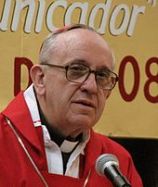
Jerome’s monumental translation has officially lost its status and has been replaced by a product of critical scholarship. When one searches for the ‘Vulgate’ on the Vatican’s website, the only results that come up are links to this new translation Nova Vulgata. Even Google directs it clients, also those who specifically look for the ‘Clementine Vulgate’ to the Vatican’s new Bible.
While the name suggests continuity, this Nova Vulgata is not a new or improved Vulgate edition. It is not even based on Vulgate manuscripts. Instead, the Nova Vulgata is a new translation into Latin. It is only presented as ‘New Vulgate’ because the Vatican has adopted it as the new authorized standard for Church and academia alike. As will be addressed later, both Catholics and scholars have reasons to revolt. In matters of sacred liturgy, secular reason and faith traditions often prove incompatible.
Vulgate only?
The original Latin Vulgate was so named because it became the ‘vulgar’, the common or the received text of Scripture in the Western Church. Of course one should be careful not to mistake St Hieronymus’s work for the original text of Scripture.
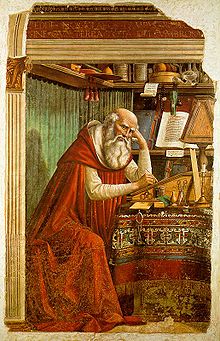
Admittedly, it was one of the most widely accepted and authorized translations of all time, and most likely also indicative of the original text of the Bible; but the Vulgate should never be treated as more than that: a translation into a foreign language. This contribution does not wish to advance any form of ‘Vulgate only’ Catholicism.
There are additional arguments for this in the history of divine worship. In a liturgical sense, the Vulgate has never functioned as the sole authority.
This is especially visible in the old Divine office and liturgy of the hours. These used to be based on the Greek or ancient Latin, not on Jerome’s Vulgate translation from the Hebrew. The Gallican Psalter (Psalterium Gallicanum) for example, was in use as such for many centuries.
Even after Trent all but canonized Jerome’s translation, the Scriptural passages in the Roman Mass continued to betray dependence on the Vetus Itala rather than on Jerome’s Vulgate. This is evident in the Psalms of the Gradual, but also visible elsewhere. The Gloria settles on the ancient ‘excelsis’ rather than the Vulgate’s ‘altissimus’ or the old Latin alternative ‘alti’. The Pater Noster likewise insists on a Latin version that predates the Vulgate, when it petitions ‘panem nostrum quotidianum da nobis hodie’, rather than ‘panem nostrum supersubstantialem da nobis hodie’.[1] A similar preference is preserved in the Sanctum, which has ‘sanctus sanctus sanctus Dominus Deus Sabaoth’, rather than the Vulgate’s ‘Sanctus, Sanctus, Sanctus Dominus Deus omnipotens’.
These differences indicate that the sacred liturgy continued to prefer established wordings from older Latin translations, also after Jerome’s Vulgate had become the Bible for the Western Church.
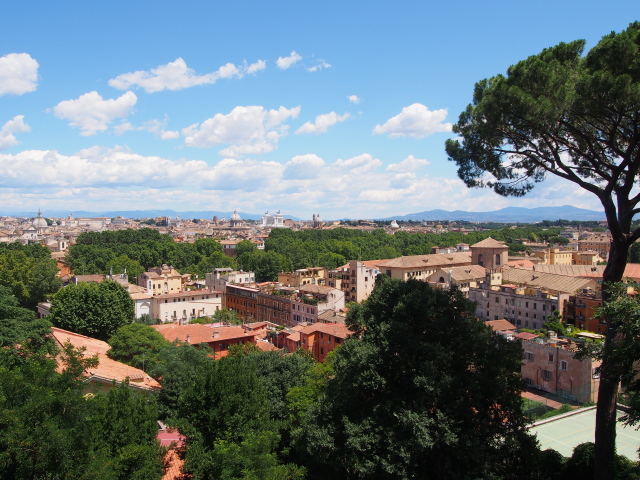
Silent revolution
My personal experience with Vatican II’s replacement goes back to the first decade after its promulgation by Pope John Paul II in 1979. As a young student in the late 1980’s, I bought a Latin New Testament, supposing that this was the famous translation by St. Hieronymus. It was a text-critical edition, published in 1985 by the Vatican Library and the German Bible Society. Its text was presented as the “New Vulgate”, inviting readers to believe that this was a new version of Jerome’s ancient work. This seemed to be confirmed by its critical apparatus. This did not refer to any Greek, which one would have expected from a new translation into Latin from Greek sources. Instead, it carried textual variants in the extent Vulgate manuscripts. Despite this, there appeared to be no Latin textual witness whatsoever for many of its readings. I found this confusing. Apparently, scholars did not need any manuscript evidence to decide what the Latin text should look like. If required, they just made up their own translation and called this Nova Vulgata.
This was not only ‘because they could’, but unfortunately also because they were specifically instructed to do so by the Vatican. Particularly for the New Testament, the Nova Vulgata adopted textual criticism as the one and supreme norm. John Paul II indicated so much in 1979. In its preface, only accessible to scholars of Latin, he admitted that the Vulgate’s text was ‘prudently improved upon’, whenever critical scholarship did not agree with the Latin manuscripts. For John Paul this was all due to the demands of the times and the legitimate suppositions of critical scholarship.
In his defence, it should be remembered that John Paul II was confronted with this project as a ‘fait accompli’. He was only a few months into his papacy when it was promulgated. John Paul II tended to respect delegated authority and the curia probably told him to sign on the dotted line.
It is perhaps not a coincidence that it was the pope who abolished the anti-modernist oath, Paul VI, who was the one ultimately responsible for this new Bible. Initially, the Second Vatican Council (1962-1965) only gave a mandate for a revision of the Latin Psalter. This was bad enough from a liturgical perspective, as this showed that the Vatican was set on discontinuity for the Gradual and the Liturgy of the Hours. Worse was to come, however, because in 1965, Pope Paul VI established a commission to expand the revision to cover the entire Latin Bible, whilst at the same time paying lip-service to Jerome’s Vulgate (cf. Dei Verbum 22, 18th November 1965).[2]
What the anti-modernist oath expressly rejected, adopting textual criticism as the one and supreme norm[3], was now applied as the new standard.
Gatekeepers of the faith
Particularly the text of the New Testament was altered by Pope Paul’s project. If the amount of verses that were changed is any indication, the Protestant King James Bible is much closer to Jerome’s Vulgate than the Vatican’s Nova Vulgata.
The underlying compilation of Greek texts, on which not only the Nova Vulgata but most modern Bible translations are based, does not have any known history in worship, at least not before the 20th century. It was only then that critical scholarship prevailed and put forward a reconstruction of an imaginary ‘original’ text of Scripture that the Church should aspire to. With the assistance of the international Protestant and Catholic Bible societies this reconstruction rapidly replaced the Greek and Latin manuscript traditions that had prevailed since the rise of orthodoxy in the fourth century.
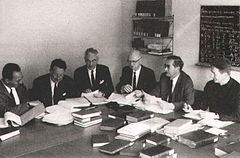
Despite the solemn warnings of Pius X, with a stroke of John Paul’s pen modern textual criticism was allowed to set aside the worship traditions of both the Eastern and Western Church.
The reconstruction underlying the Nova Vulgata was largely based on a handful of manuscripts. Or more correctly, it was reliant on committee votes. A select group of gatekeepers made determinations on the restoration of what they deemed likely to have been the sacred text.[4] This has proved very much a work in progress, with each new generation of gatekeepers coming up with its determinations and evaluations of manuscripts. The Nestle-Aland text, on which the Nova Vulgata is based, presently travels at version 28. In the meantime, other organisations like the Society of Biblical Literature have produced rival versions.
It should be noted that the two most important of the manuscripts that underlie the Nova Vulgata, codex Vaticanus and Sinaiticus, have no proven history of use in the Church. Sinaiticus even advocates a heretical view on the canon of the New Testament. The fact that Vaticanus survived at all and its extremely corrected state seems to indicate that it never had an intensive history of copying for Church purposes. The two manuscripts disagree amongst themselves in thousands of places. Already in the 19th century it was pointed out that in the Gospels alone Vaticanus is found to omit at least 2877 words; to add 536; to substitute 935; to transpose 2098; to modify 1132 (the corresponding figures for Sinaiticus being 3455, 839, 1114, 2299, 1265 respectively).
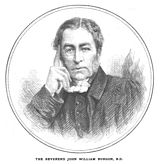
The orthodox Anglican scholar John Burgon, Gresham Professor of Theology, was keen to show that the omissions, additions, substitutions, transpositions, and modifications, are by no means the same in both. More than a century later it is still easier to find two consecutive verses in which Vaticanus and Sinaiticus disagree, than to spot two consecutive verses in which they entirely agree. For scholars this leaves welcome room for creativity and speculation, but is the Church really best served in this way?
Even if one sets these considerations aside, why should a religious community be forced to reject a sacred text that it has cherished for at least 1500 years? Wasn’t the Vulgate an authoritative vehicle for faith in Western Catholicism longer than even liberal scholars care to remember? Generally, most theologians readily agree that sacred texts may grow, be redacted over centuries and be better suited to serve the community of faith as a result. Most contemporary scholars would even insist that many books contained in the Old and New Testament are products of such community-redaction histories. Even when one adopts this post-Enlightenment view of Scripture, what in the world gives a group of scholars, or clerics for that matter, the right to tell a faith community of a billion people to dispense with their ancient tradition for a sacred text?
Even from a modernist point of view this does not make sense at all, unless one desires to actively interfere in sacred traditions and influence the way other people worship and understand the ‘Word of God’.
Scholars’ revolt against JP2
Whereas critical scholarship applauded the radical way in which the Nova Vulgata set aside both Eastern and Western tradition for the New Testament, it condemned its approach for the Old Testament. This was probably due to the fact that the foundational text of most of the Old Testament is a critical edition that was completed by the monks of the Benedictine Abbey of St. Jerome under Pope St. Pius X. In other words: far too conservative and respectful towards Sacred Scripture than desirable in today’s terms. Pope Pius and his Benedictines also wanted to come up with a better Latin version for the Old Testament, but, by and large, their enterprise considered itself accountable to existing Latin manuscripts. Their work was more a revised Vulgate than a new translation. For instance, unsurprisingly (in the light of Hieronymus’s rejection of the Deuterocanonical books) they used the Vetus Latina (collection of Latin Bible translations which predate the Vulgate) as foundational text for the books of Tobit and Judith.
As a result critical scholarship hasn’t been particularly enthusiastic about the Nova Vulgata either. When, in 2001, Pope John Paul II dared to promote the Nova Vulgata as model for all Scripture translation (Liturgiam Authenticam, 2.1.24, May 7, 2001), a revolt of Old Testament scholarship was the result.
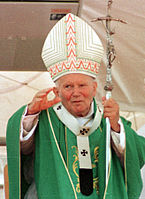
The pope or his minion responsible, clearly did not understand the issues. A Jesuit professor and his colleagues in the United States combined with the Board of the Catholic Biblical Association to put pressure on all bishops that this was really unacceptable. Of course critical Old Testament scholarship was very much unwilling to adopt the translation principles that were embraced by Pope Pius X and the Benedictines of St. Jerome. These are two completely different paradigms. Cardinal Jorge Medina Estévez tried to restore a measure of peace (Letter on behalf of the Congregation for Divine Worship – November 5, 2001), but scholars generally have not accepted his explanation and do not consider Liturgiam Authenticam as normative.[5]
In an attempt to safeguard at least a breathing space for traditional Catholicism within the post Vatican II Church, particularly for a young generation of committed Catholics, Pope Benedict followed up with his apostolic letter Summorum Pontificum (7th July 2007), on the use of the Roman liturgy prior to the reform of 1970. Whilst Benedict carefully avoids the words ‘nova’ and ‘vulgata’, he allows a pastor, using his own discretion without additional permissions from a bishop, to celebrate traditional forms of the Latin Mass, setting forth the adapted 1962 version as norm. Pope Benedict’s legislation re-instituted the validity of the ancient Latin rite and safeguarded it against bishops who would otherwise be inclined to actively suppress this.
This legislation had been carefully obstructed both from inside and outside the Vatican, but Benedict made the decision to go ahead with it anyway. ‘For such a celebration with either Missal, the priest needs no permission from the Apostolic See or from his own Ordinary.’ It wasn’t a good way to make friends in high places, as Benedict estranged himself from powerful bishops who had tried to expunge any form of Latin Rite. On the other hand, thousands of young families who care for genuine spirituality and a connection with an unchanging faith of the Church of all Ages are grateful for his decision.
Benedict’s legislation considered ‘the Roman Missal promulgated by Saint Pius V and revised by Blessed John XXIII’ as an ‘extraordinary expression of the same lex orandi of the Church and duly honoured for its venerable and ancient usage’. As this form of mass included readings and recitations from the Vulgate and the Vetus Itala, both Jerome and his predecessors would be considered legitimate in this context.
The reference to Pius V touches on the fact that even without Benedict’s decision exceptional forms of liturgy continued to be permitted for all sorts of orders and monastic associations. These are generally covered by the 1570 papal bull Quo primum. This included, amongst other, an ancient Visigothic Rite from the days of Charlemagne. Otherwise it also applies to Monastic associations that follow the proper missal of the Dominican or Carmelite Rite. These communities do not celebrate the Tridentine Mass, but older liturgies.
Reasons to reject
In summary, Catholics have three good reasons for not using the Nova Vulgata in worship: for what it presents; for what it replaces; and for what it destroys.
1) For what it presents: an imaginary text of Scripture on the authority of scholarship, based on a handful of manuscripts that run contrary to the textual traditions of both the Eastern and the Western Church.
2) For what it replaces: Scriptures with a proven history of common worship of over 1500 years at least. Apart from the legitimate consideration that knowledge of Greek and Latin was much better in the early Church than it is today, and that the Jewish scholars responsible for the Septuagint knew both their Hebrew and Greek better than anyone alive today, people like St Jerome had manuscripts available that were highly regarded at the time, but no longer exist today, like Origen’s Hexapla, which formed the basis for the traditional Latin Psalter of the Church.
3) For what it destroys: the Communion of Saints and our shared patrimonium of worship. For the known history of the Church Christians have used both the Latin and the Byzantine Scriptures to hear the voice of God and to sing his praises with the sacred words of the Psalter. Even from a psychological point of view, it would be a crime to break the vessels that carried the archetypes of Christian civilisation.
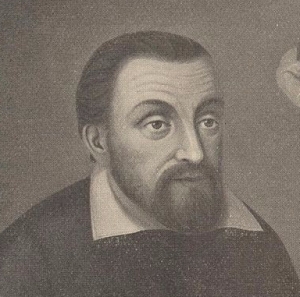
Perhaps, one day, like Bartholomäus Holzhauser anticipated, a great Ecumenical Council will take place and restore the true sense of Scripture.
Useful resources:
For manuscript traditions with a long tradition of worship in the Church, both in the West and East (pre- AD1054):
Interlinear Bible for Textus Receptus
[1] The Vulgate actually translates τὸν ἐπιούσιον in the Lord’s Prayer both ways. In Matthew 6:11 it is translated ‘superstantialem’; but in Luke 11:3 Jerome renders ‘quotidianum’.
[2] Dei Verbum 22: praecipue illam quam Vulgatam vocant, semper in honore habet.
[3] Et criticem textus velut unicam supremamque regulam.
[4] See B.M. Metzger, A textual Commentary on the Greek New Testament, a companion volume to the United Bible Societies’ Greek New Testament, UBS London 1975.
[5] O. Artus, ‘Dei Verbum. L’exégèse catholique entre critique historique et renouveau des sciencesbibliques’, Gregorianum, Vol. 86, No. 1 (2005), pp. 76-91; E.A. Wcela, ‘What Is Catholic about a Catholic Translation of the Bible?’, The Catholic Biblical Quarterly, Vol. 71, No. 2 (April 2009), pp. 247-263. Cf. R.J. Clifford, ‘The Authority of the “Nova Vulgata”: A Note on a Recent Roman Document’, The Catholic Biblical Quarterly, Vol. 63, No. 2 (April 2001), pp. 197-202.

A very thought-provoking piece, Dr Zuiddam. I think your list at the end of the article of the three reasons to reject is something that demands a reply from those responsible. I also find it disturbingly ironic that the King James translation should have more in common with Jerome’s Vulgate than the Nova Vulgata.
LikeLike
Another protestant version of the bible.
LikeLike
Interestingly, this is a completely different ball game as e.g. Martin Luther’s translation into German (not the recent revised versions) is much closer to the Vulgate and certainly to the Byzantine text than any modern Catholic translation on the market. Today, the dividing line is not so much Protestant (in the original sense) versus Catholic, but modernism versus both.
LikeLike
Now we know why some verses in the daily readings are not the same.
St. Jerome, pray for us.
Teach them Aramaic, Hebrew, Arabic, Greek and Latin beginning in the 3rd grade. Teach them to read, write, speak the languages Our Lord spoke, beginning in the 3rd grade.
LikeLike
There is no evidence that Jesus – as man, spoke Arabic, Greek or Latin; although if he lived in a commercial center with visitors from all parts of the Empire he may have picked up a phrase or two from other tongues. The Savior – The Christ never insisted prayer in a particular language but in “Spirit.” It will do well to note His condemnation of repetition as a means of ‘getting God’s attention as opposed to a sincere and humble recognition of God’s infinite goodness and its revelation to us in Christ. Teaching youngsters to read in the languages of ‘Our Lord’ is nonsense – unless they are to be linguists. Teaching them to pray and to learn of God’s Love for them by our own lives will encourage and enable them to approach the Lord in Spirit and in Truth – as both grow in them.
LikeLike
Our Lord did visit Sydon, Tyre, the Decapolis, spoke to a centurion and to a Roman provincial governor. Arabic I do doubt he spoke, maybe? But He definitely spoke all 4 others: Aramaic in daily life plus Latin and specially Greek with foreigners, plus knowing Hebrew for prayers. Which is the main point of using the sacred languages now, not abolishing the Law or the Prophets; for example, the Apostle did not ban circumcision, but rather expounded that Christ’s Kingdom was for both Jew and Gentile; and likewise he did not ban speaking any language, old or new. I’m pretty sure in the Roman empire there were many more tongues than just (ecclesiastical) Latin and Koine Greek; yet the masses preferred to gather together and all share the sacred languages with the priests and bishops, instead of being divided by the vernacular (which still existed, but as an exception rather than a rule, and usually with apostolic foundation or other extenuating circumstance; example the Croatians getting to use vernacular due to being evangelized for a while, or the Ethiopian Orthodox, or the Indian Church founded by Saint Thomas). Kind of like now in which many parishes are divided by who goes to Mass in which language…
Oh and the condemnation is of VAIN repetition. If He had condemned any and all repetition, why go to church every Sunday? why pray every morning? The “vain repetitions” and “traditions of men” were also a criticism in particular of Jews who had picked up certain pagan traditions (from Babylon, Persians, or Hellenes) not dissimilar to those of the Muslims, in which the number of prayers is all that matters, and nothing at all is mentioned about meditation or reflection on mysteries as on the Rosary for example.
All good about teaching youngsters the Spirit and the Truth. The latter is helped by knowledge as well though. If the kids are too cool to be linguists, then at the very least we could keep the traditions and translations passed down by the linguists closest to Our Lord’s life. I’m not against vernacular liturgy, but it definitely can be much better than what we have now, and it definitely should be just an option (specially for kids and converts) when compared to the sacred languages in which the original Truth was received. Because, it’s not like we have any better records other than what barely any papyri that survive now can tell us. I’d rather conclude there were more surviving books in antiquity for Saint Jerome to peruse than for modern translators now… and at any rate, the Canon of the Mass is even more ancient, proving that Tradition came before Scripture…
Finally, Pius 12th mentioned that even if vernacular critical translations of other original texts were found, the Vulgate remained authentic and free of error in the juridical sense, faith and morals pretty much. Therefore it’s good to at least try to have ONE approximate translation of it, instead of just retranslating and updating according to the vernacular fashions of the time, like the Nestle-Aland 26 versions or your iPhone 10… lest we forget when using certain expressions no longer innocent or otherwise passe or impolite, vernacular languages do also change, so it is better to have fixed versions of sacred texts. If not, what faith will our children inherit precisely?
LikeLike
Indeed, modern NT bibles are based on a text that is a new textual selection of the Greek. Historically there is no proof whatsoever that Nestle-Aland as a text ever existed in the history of the church before the 20th century. It is a modern(ist) amalgamation. For passing on faith traditions one wants religious texts that have a proven history in the Church. As evidenced in the Gospels, Our Lord spoke Aramaic and Greek. Probably not Arabic or Latin. Greek continued to be the language of the Roman church for the first centuries. The Kyrie is a remnant of this.
LikeLike
*And actually, the Apostle does mention the relief from obligatory circumcision, but does not mention any relief from having a sacred language whatsoever, although he mentions the Words of Consecration as specifically as possible so as that they could be used precisely; ergo that means those words are canon and it’s okay to repeat them, if not in vain of course. Also, other very early Church Fathers such as Justin or Clement mentioned other parts of the Liturgy meant to be repeated, and did not dissuade from sacred language either; rather, one can see them quote certain Aramaic and Hebrew terms as needed to be repeated too. And again, Koine Greek and Late Latin were also mass languages, lingua franca, that the faithful of many provinces with many languages preferred to be united under One Church, and had the added benefit of being spoken by Our Lord. So, there is added benefits, both from being closest to the Word of Our Lord, and praying that way together with the rest of the nations of the world, like our earliest ancestors in the Faith, who keep praying for us if in Heaven.
LikeLike
Actually, Benedict XVI’s action did not “re-institute the validity” of the traditional Mass. He himself pointed out that it had never been prohibited, any more than the earlier forms of the Mass explicitly excepted in Quo Primum. In fact, the document of Paul VI “Missale Romanum” did not legislate anything; thus, Quo Primum was and is still the law of the Church. Therefore, it is the “Novus Ordo” which is unlawful for use in the Church, not the traditional or “Tridentine” Mass. Thank you for the interesting article on the new “Vulgate.”
LikeLike
Thanks kindly, the article, of course addresses this topic from a practical viewpoint whether it would be considered valid by a bishop or could be an accepted practice in a regular parish.
LikeLike
I’m sorry, but I find this article very defective. Let’s look at the facts.
In April 1979 Pope John Paul II promulgated the Nova Vulgata (New Vulgate) edition of the Bible as the new official text of Sacred Scripture for use in church documents and the Latin Novus Ordo liturgy. The present article (“Silent Bible Revolution in the Vatican”) has this to say about the new version:
“While the name suggests continuity, this Nova Vulgata is not a new or improved Vulgate edition. It is not even based on Vulgate manuscripts. Instead, the Nova Vulgata is a new translation into Latin. Its text was presented as the ‘New Vulgate’, inviting readers to believe that this was a new version of Jerome’s ancient work.”
This and similar statements leave the impression that calling this version the “New Vulgate” is outright deception on the part of John Paul and the Vatican, since, according to the author of the article, it is not in fact “a new version of Jerome’s ancient work”, but rather, “a new translation into Latin” that’s “not even based on Vulgate manuscripts”.
It turns out, however, that the real deception is on the part of the author of “Silent Bible Revolution” in making the above allegations. They are false; and his article is another unfortunate example of the way traditionalists too often exaggerate the evils that have followed Vatican II.
I have just spent an hour comparing key biblical passages in the “Clementine” Vulgate (the approved edition of St. Jerome’s translation that was used for nearly four centuries after the Council of Trent) and the Nova Vulgata. I quickly found that the latter is not only “based on” the former, but is mainly a word-for-word repetition of it!
Remnant readers with access to the two texts should verify this for themselves. For instance, in the whole of Genesis, ch. 1, only a few words are differently translated in the New Vulgate (in verses 12 and 29). And the entire first chapter of St. John’s Gospel is almost identical in both versions. Indeed, in verses 1-14, the much-loved ‘Last Gospel’ that we hear at the end of every Traditional Mass, only two words are now translated differently (‘veniens’ instead of ‘venientem’ in v. 9, and ‘acceperunt’ instead of ‘receperunt’ in v. 12). That means 99% of the words in this passage (170 out of 172) are identical with those of the traditional Vulgate. And from what I can see, that is pretty much typical of the Nova Vulgata.
Fr. Brian Harrison, O.S., St. Louis, Missouri.
LikeLike
Thank you so much for your response.
The statements about the Nova Vulgata are factual and acknowledged by the Vatican. It is not improved Vulgate but a new translation on the basis of present reconstructions of the Hebrew and Greek texts.
I do and would not accuse Pope John Paul II of outright deception. He was very straightforward on the topic. It was not his project, but Pope Paul VI’s. He made it very clear at the time that the purpose of the Nova Vulgata was to get in line with the times and modern(ist) text critical scholarship. I do think that the name, be it intentional or not, is misleading.
The driving idea behind the developments in Bible translation from 1948 was to create a universal ecumenical standard text.
Choices, even when seemingly small, may be still significant. An objective way to check the statements in this article would be to consult the text critical edition of the Nova Vulgata, Novum Testamentum Latine, Deutsche Bibelgesellschaft, Stuttgart 1984, which carries the text of the Nova Vulgata editio. Otherwise I warmly recommend your suggestion that readers compare the two versions.
Of course it should be kept in mind that differences between the text of the Church and present reconstructions are always relatively limited, because even if the Latin manuscripts are ignored, any textual choice ultimately requires some form of Greek or Hebrew manuscript evidence. Percentages of agreement will be likely to be in the nineties for most books of Scripture. Still, the principle of departure from the Church text as Vatican policy should be reconsidered.
May wisdom be multiplied.
LikeLike
This is quite an insightful blog. As a pastor from the other side of the fence, what I deal with is more often a question of which English text is true to Scripture. Critical scholarship is very difficult to explain from the pulpit without detracting from valuable time where I want to exposit God’s Word.
Thank you for giving a valuable resource into the mind of the RC critical discussion of Latin sources. God bless your pursuit of Him insight of a scholarly discussion.
LikeLike
Deeply grateful for your encouragement!
LikeLike
May I just say what a relief to discover a person that genuinely knows what they are discussing
on the web. You actually understand how to bring a problem to light and
make it important. More people ought to read this and understand this
side of the story. I was surprised you aren’t more popular
given that you definitely have the gift.
LikeLike
Thanks kindly for your encouraging words. Hopefully the truth will out, and more people will find their way to my website!
LikeLike